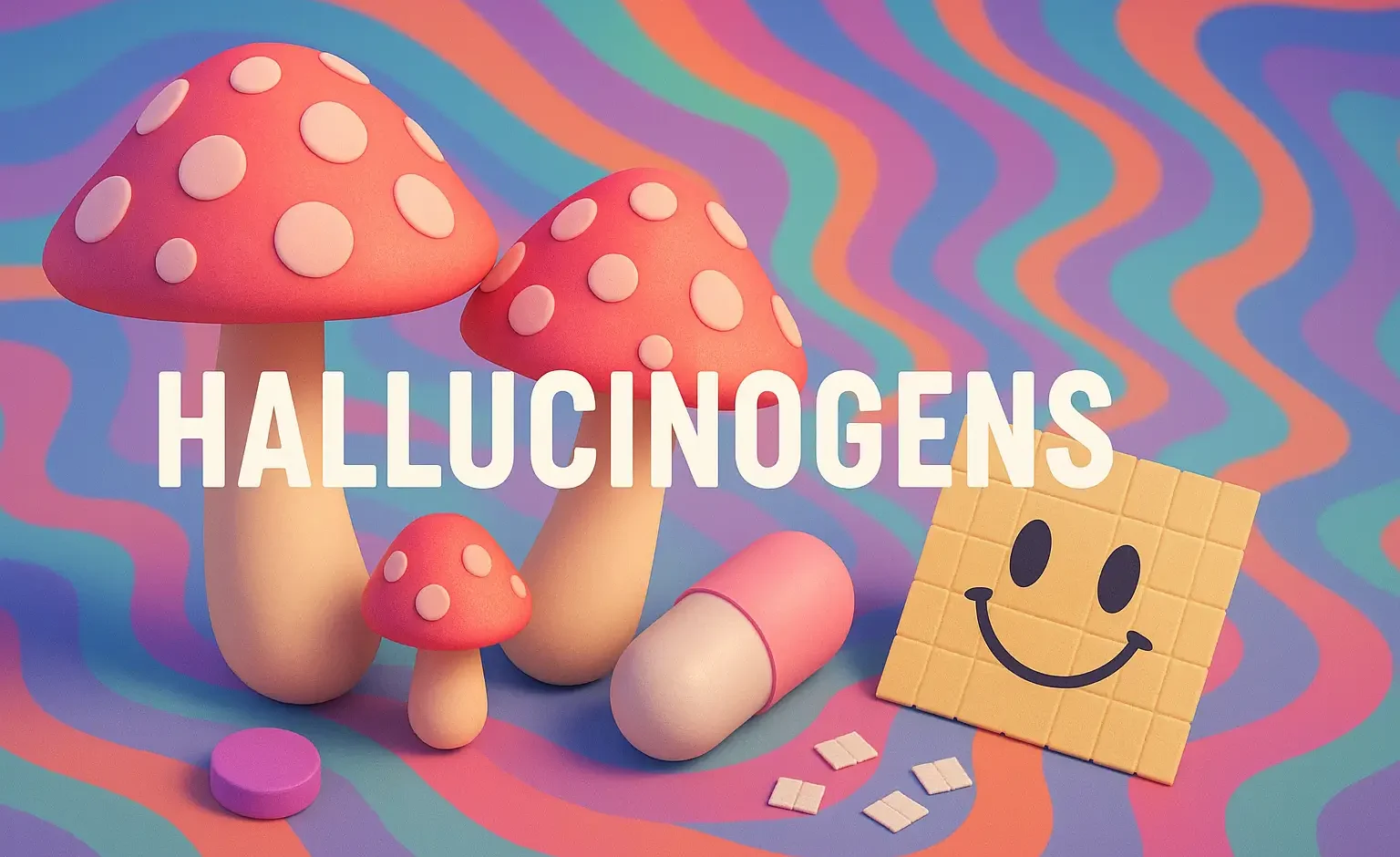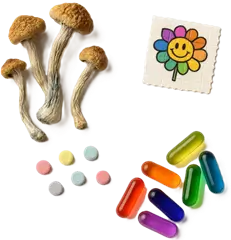- Hallucinogens are psychoactive substances that alter perception, mood, and cognition.
- Many of these compounds are derived from plants.
- Below is a detailed overview of common hallucinogenic plants, including their biological sources, chemical constituents, and uses.
- Hallucinogens are psychoactive substances that alter perception, mood, and cognition. Many hallucinogens are of plant origin.
Common Hallucinogenic Plants:
| Plant | Biological Source | Chemical Nature | Uses |
| Cannabis (Marijuana) | Cannabis sativa (family Cannabaceae) | Tetrahydrocannabinol (THC), Cannabidiol (CBD) | Recreational drug, medicinal use for pain, epilepsy, and nausea |
| Peyote | Lophophora williamsii (family Cactaceae) | Mescaline (a phenethylamine alkaloid) | Used in Native American rituals, treatment for anxiety and depression |
| Magic Mushrooms | Psilocybe species (family Hymenogastraceae) | Psilocybin, Psilocin | Potential therapy for depression, anxiety, and PTSD |
| Ayahuasca | Banisteriopsis caapi + Psychotria viridis (family Malpighiaceae & Rubiaceae) | Dimethyltryptamine (DMT) + β-carbolines (Harmine, Harmaline) | Used in spiritual and religious rituals, potential for mental health therapy |
Hallucinogens act by modulating serotonin receptors (5-HT2A receptors) in the brain, causing altered sensory perception, euphoria, and dissociation.


